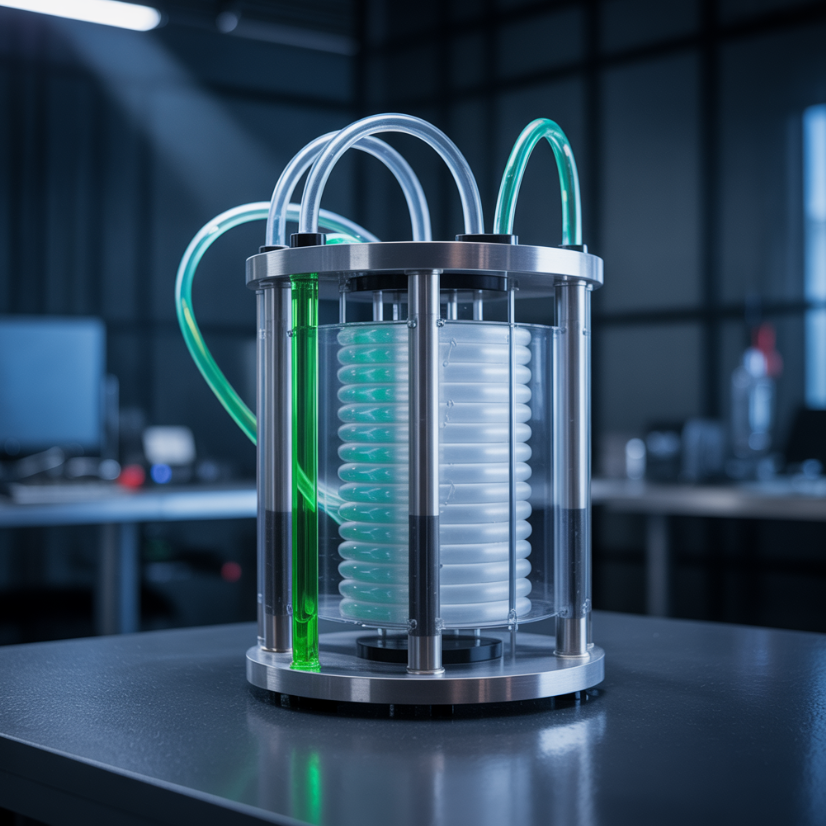
❄️ Magneto-Restrictive Cooling Systems: Solid-State Cooling with Magnetic Diodes
Cooling underpins modern life. From preserving food and medicines to stabilizing data centers and making cities livable, refrigeration is a silent partner in global progress. Yet the dominant technology — vapor compression — carries an unsustainable legacy: noisy compressors, bulky mechanical systems, and reliance on refrigerant gases with significant environmental impact.
The world is searching for alternatives. One of the most promising is magnetocaloric refrigeration, where magnetic fields drive heat-exchange cycles in solid-state materials. But this field faces its own hurdle: efficiently controlling the directional flow of magnetic energy.
Magnetic diodes provide the missing piece.
By enabling one-way, steerable flux pathways, magnetic diodes can regulate magnetocaloric cycles with precision, compactness, and efficiency impossible using conventional electromagnets or mechanical switches. They transform magnetocaloric cooling from a laboratory curiosity into a scalable, practical technology.
🧲 How It Works
Magnetocaloric systems exploit the property of certain materials to heat up when magnetized and cool when demagnetized. To harness this cycle effectively, magnetic fields must be switched and directed with high precision.
- Flux steering instead of brute force → magnetic diodes channel flux exactly where it is needed, minimizing wasted input power.
- One-way gating → prevents backflow of flux, keeping cycles efficient and predictable.
- Reduced current demand → far less electrical energy is consumed compared to traditional electromagnet-based field cycling.
- Solid-state reliability → no moving parts, no wear, no compressor noise.
The result: a compact, efficient heat pump that can operate silently and cleanly.
⚡ Why It Matters
The global cooling sector is under pressure to decarbonize and innovate. Magnetic diode–enabled systems speak directly to that need:
- Environmental sustainability Eliminates refrigerants with high global warming potential (GWP), supporting international climate goals.
- Energy efficiency Precise flux steering lowers input power, reducing operational costs and easing demand on grids.
- Compactness With no compressors, coils, or heavy shielding, systems can be lighter and smaller, ideal for mobile or space-constrained applications.
- Quiet operation Solid-state design enables whisper-quiet cooling, essential in residential, medical, and aerospace environments.
- Versatility Applicable from household refrigerators to industrial freezers, medical cold chains, and spacecraft thermal management.
🌍 Institutional Opportunity & Prestige
A university or research institute leading the world’s first demonstration of a magnetic diode–driven magnetocaloric cooling system would immediately position itself at the cutting edge of sustainable energy technology.
- Cross-disciplinary collaboration → merges materials science (magnetocaloric alloys), electrical engineering (flux control), and mechanical design (heat exchangers).
- Attracts investment → from clean-tech funds, climate research initiatives, and industries eager to move beyond refrigerants.
- Elevates reputation → a published breakthrough in compressor-free cooling would secure global recognition and partnerships.
For Educators, steering such a project is not simply a research success — it is an institutional legacy.
🚀 A Brighter Cooling Future
Imagine:
- A household refrigerator that runs silently, with no refrigerant gases.
- A vaccine transport system that maintains precise temperatures without compressors or fragile electronics.
- Data centers cooled with compact, solid-state systems, reducing energy footprints.
- Spacecraft thermal loops immune to fluid leakage, vibration, and radiation damage.
This is not speculative fiction. With magnetic diodes, magnetocaloric cooling becomes a near-term engineering reality.
🌟 Conclusion
Magnetic diodes transform magnetocaloric refrigeration from promising to practical. By steering flux with minimal energy, they enable cooling systems that are quieter, greener, and more compact than anything possible today.
Institutions that take the lead in this field will not only help solve one of the world’s pressing environmental challenges but also gain recognition as pioneers of next-generation thermal management.
What a future to be part of.
